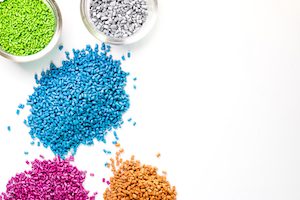
Before waxing poetic about yet another of my favorite plastics, let me be clear: I love them all. (Reference my silicone and polyester articles if you doubt my even-handed passion.)
So let’s delve into a plastic that is widely considered one of the most versatile: polypropylene! You run across this multifunctional multi-tasker in your kitchen (utensils), your closet (athletic apparel), your family room (area rugs), your car (batteries) … in fact, polypropylene is found in just about every market sector that uses plastics. Sort of like a superhero of plastics.
Discovered by Italian scientists in the mid-1950s, polypropylene today is surpassed in production volume only by polyethylene, discovered a couple decades earlier. Polypropylene’s unique chemical makeup reveals itself in its various superpowers (OK, characteristics):
Polypropylene’s characteristics make it ideal for tough, robust products ranging from protective car bumpers to life-saving medical tools to cold-weather gear for our soldiers. Plus it also can be engineered into a wide range of packaging that helps protect products we rely on every day, from medicine to yogurt to baby food.
One of my favorite things about polypropylene? It’s a key part of the number one recycled product in America: car batteries. More than 95 percent of car batteries are recycled in this country to recover their metals and plastics (polypropylene). Now that’s superhero status.
Speaking of recycling, like many other thermoplastics, polypropylene can be melted and reformed into plastic pellets that then are used to make new products. In fact, polypropylene bottles and containers are collected for recycling in most curbside programs across the country. Recycling polypropylene helps keep this superhero out of landfills to live another life as colanders, food storage containers, cutting boards, outdoor rugs, car parts and more.
So…polypropylene is used in nearly every plastics market, from protective packaging to medical equipment. It’s tough. It’s durable. It’s being recycled from cars and households around the country.
That’s my kind of hero. Check out different types of plastic and their uses.
Original Source: https://www.plasticsmakeitpossible.com/about-plastics/types-of-plastics/professor-plastics-one-of-the-plastics-superheroes-polypropylene/